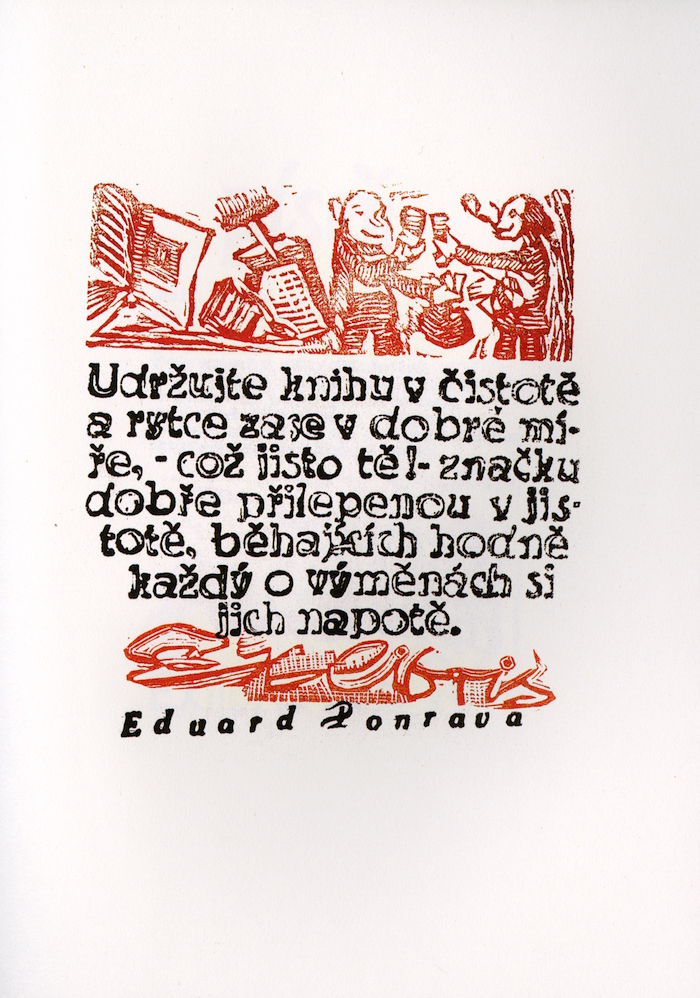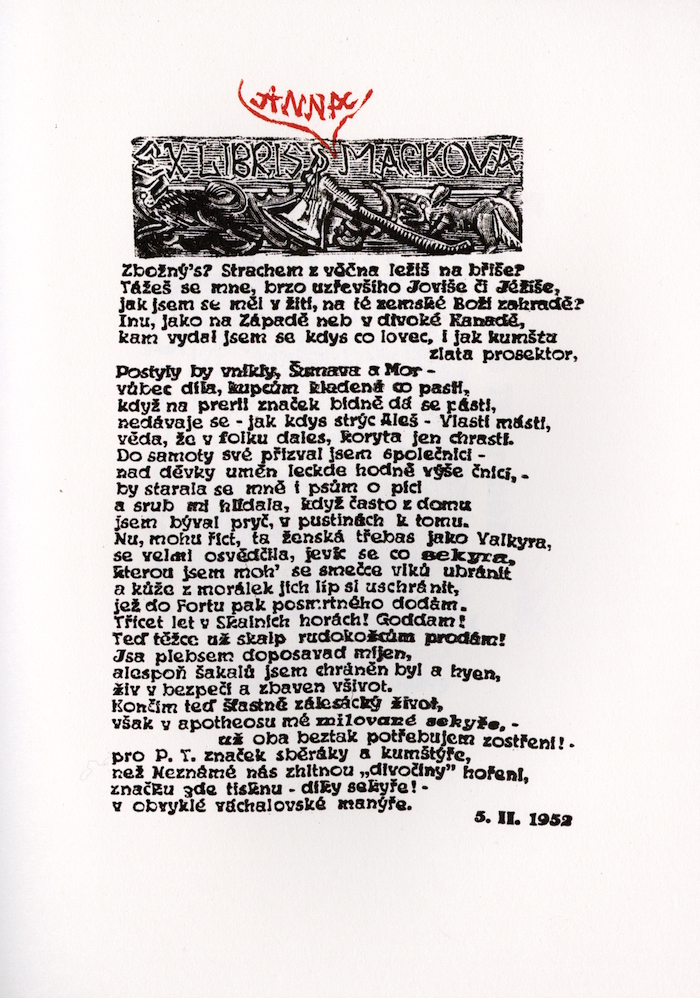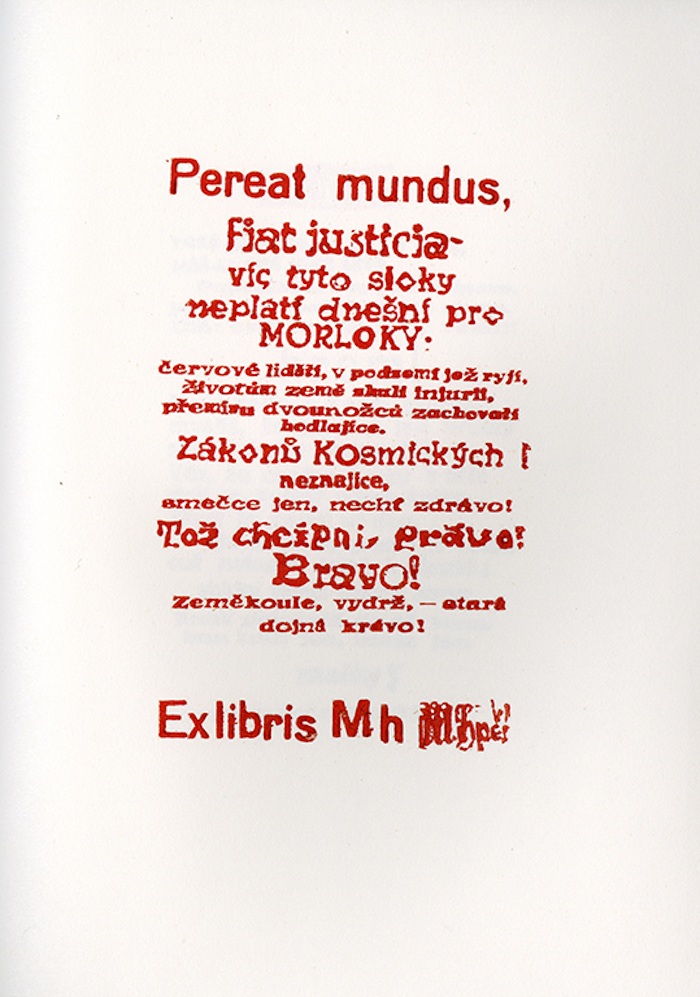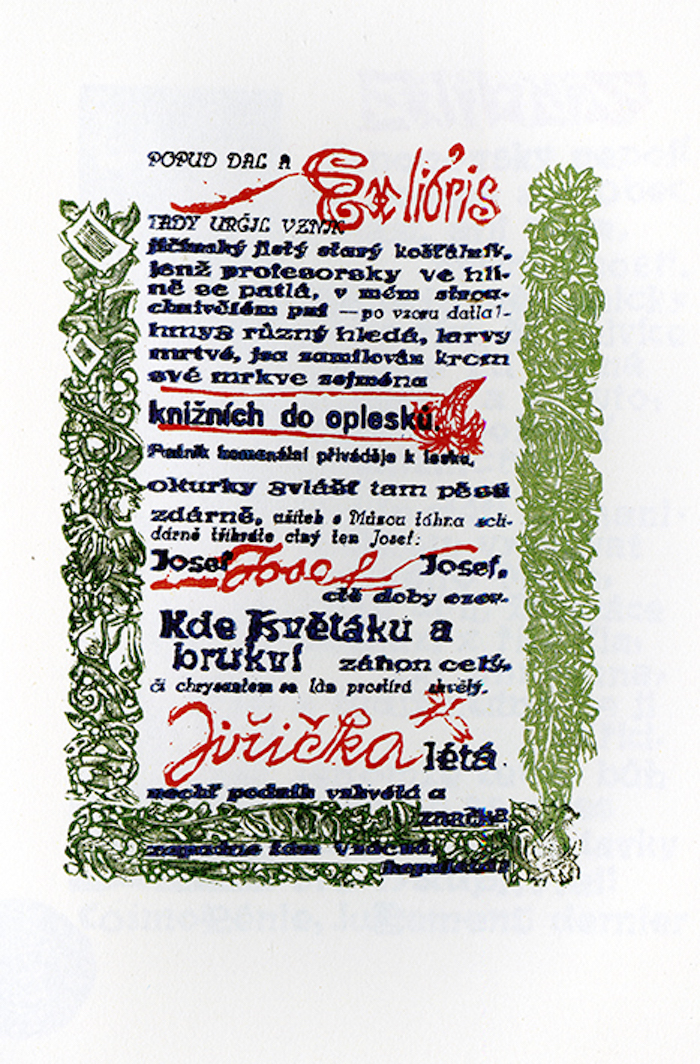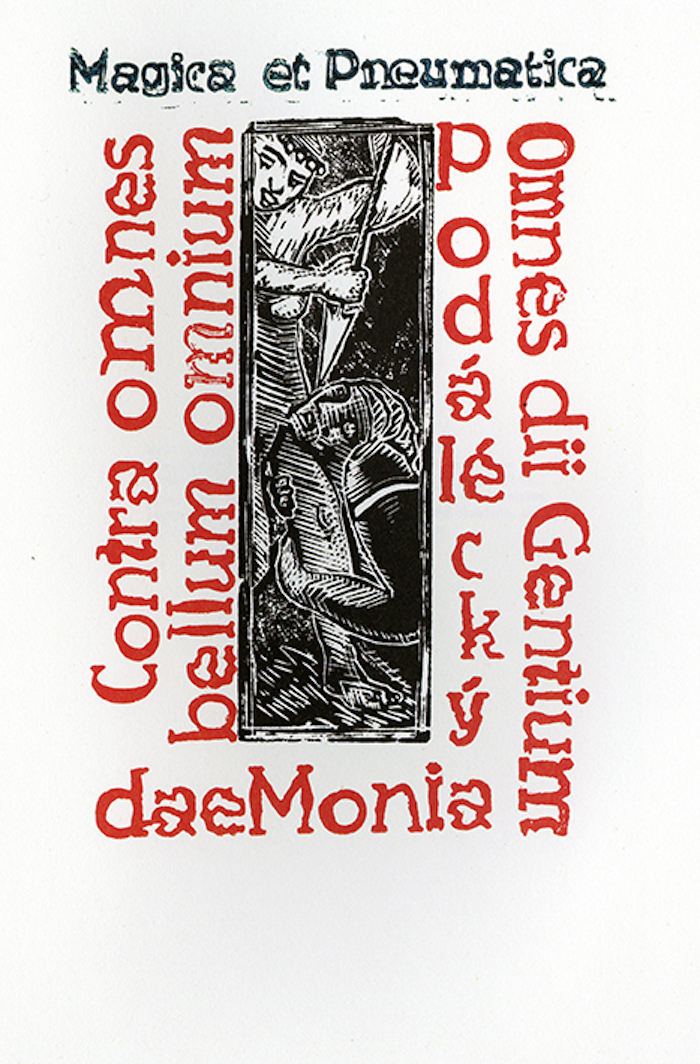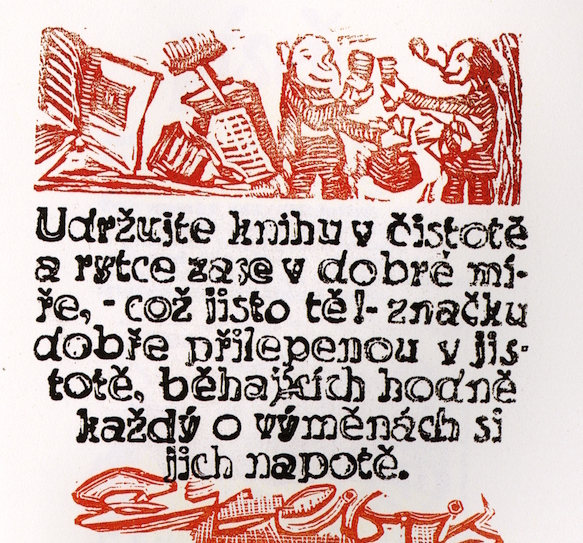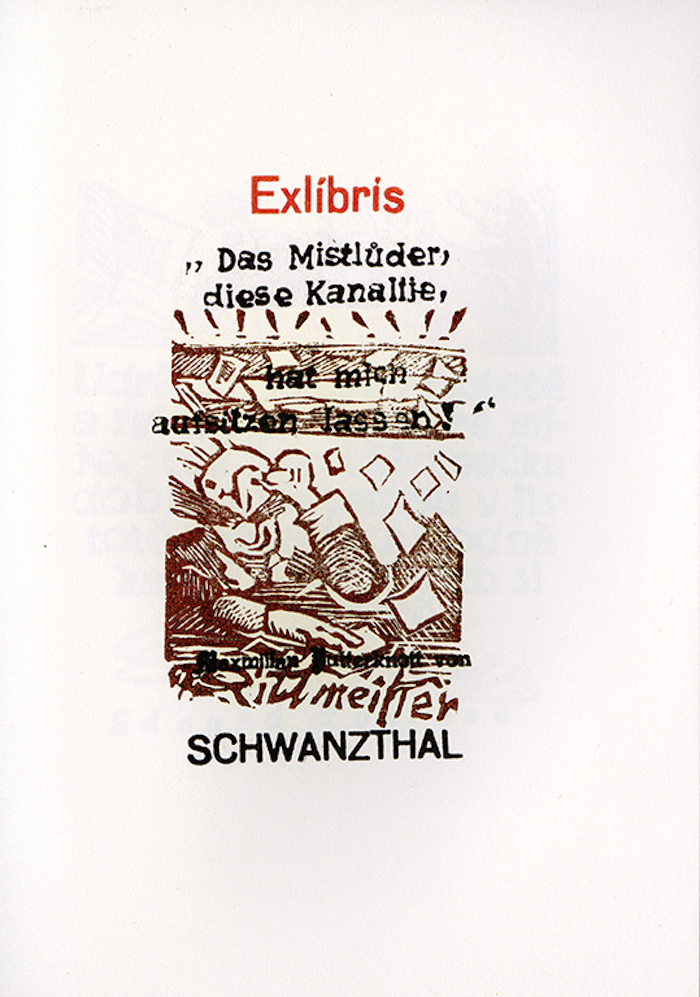
For some, graphic design is simply a means to an artistic end, which means being unencumbered by the so-called rightness of form that enslave the truly orthodox Modernist design precisionists. Unencumbered means that emotion is more important than function, and personal expression is more valuable than objective analysis. In this way graphic design is a conduit.
This sums up Czech-born Josef Váchal (1884–1969), painter, graphic artist, illustrator, sculptor, woodcarver, writer, poet, printer, and typographer, who cut his own typefaces and embraced various expressive opportunities.
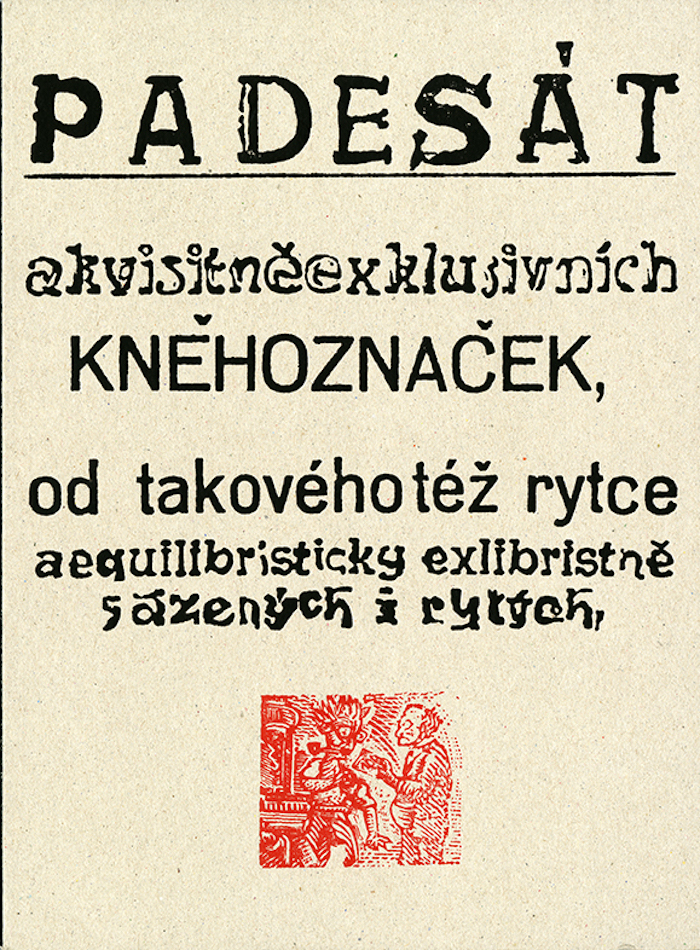
The ex-libris shown here that he made for friends are a small portion of his collected work yet exemplify his penchant for combining disparate types and darkly acerbic images for a specific purpose. In addition to using existing metal typefaces, Váchal drew, or rather scrawled, his own, violently degraded alphabets that look like he ran a press-proof numerous times through an old Xerox machine. Of course this was decades before their invention. The type is a disharmonious compliment to his woodcut illustrations, but yields a startling outcome. If Váchal were working during the early 1990s, his feral types would fit squarely into the grunge style.
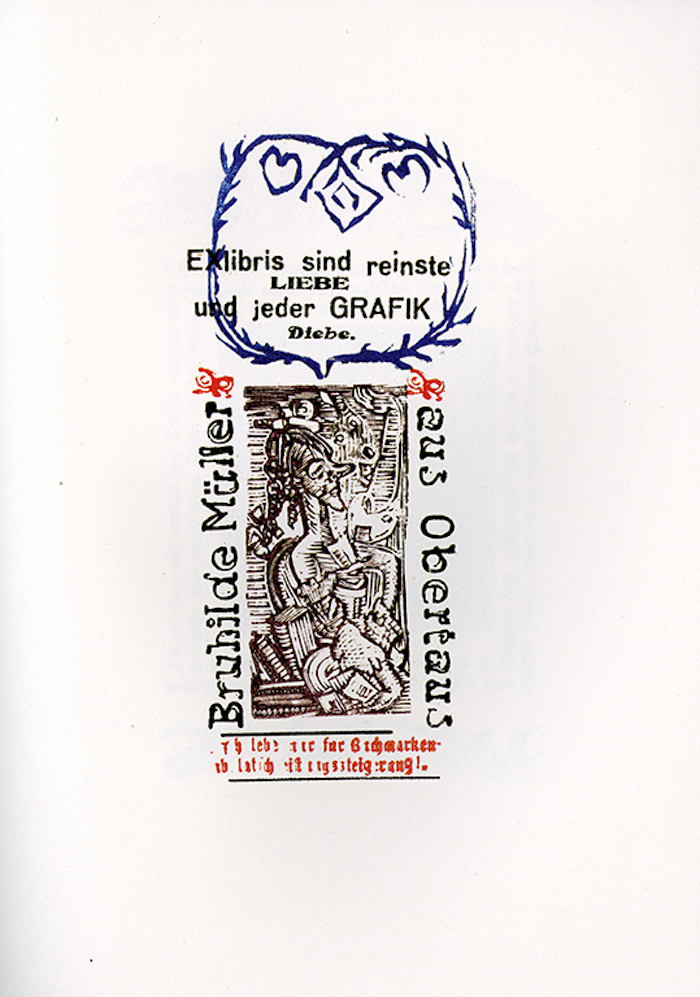

Although at the outset of his professional career he was influenced by Art Nouveau, Váchal was decidedly ahead of his time. He practiced a defiantly anti-aesthetic method that crept into many different forms and outlets. At the turn of the century he wrote poems, and in the years before World War I, he developed a raucous style of painting, print-making, designing, and book printing skills, influenced more or less by occultism, mysticism, and Oriental philosophies. A fusion of dark and fanciful grotesqueries influenced the distressed look of his typefaces. And all are related to a demonic symbology born to some extent on early Christian imagery.
Váchal’s ex-libris exude the kind authenticity that reveals a true iconoclast and transcends popular style—and this means it appears rebelliously fresh.
